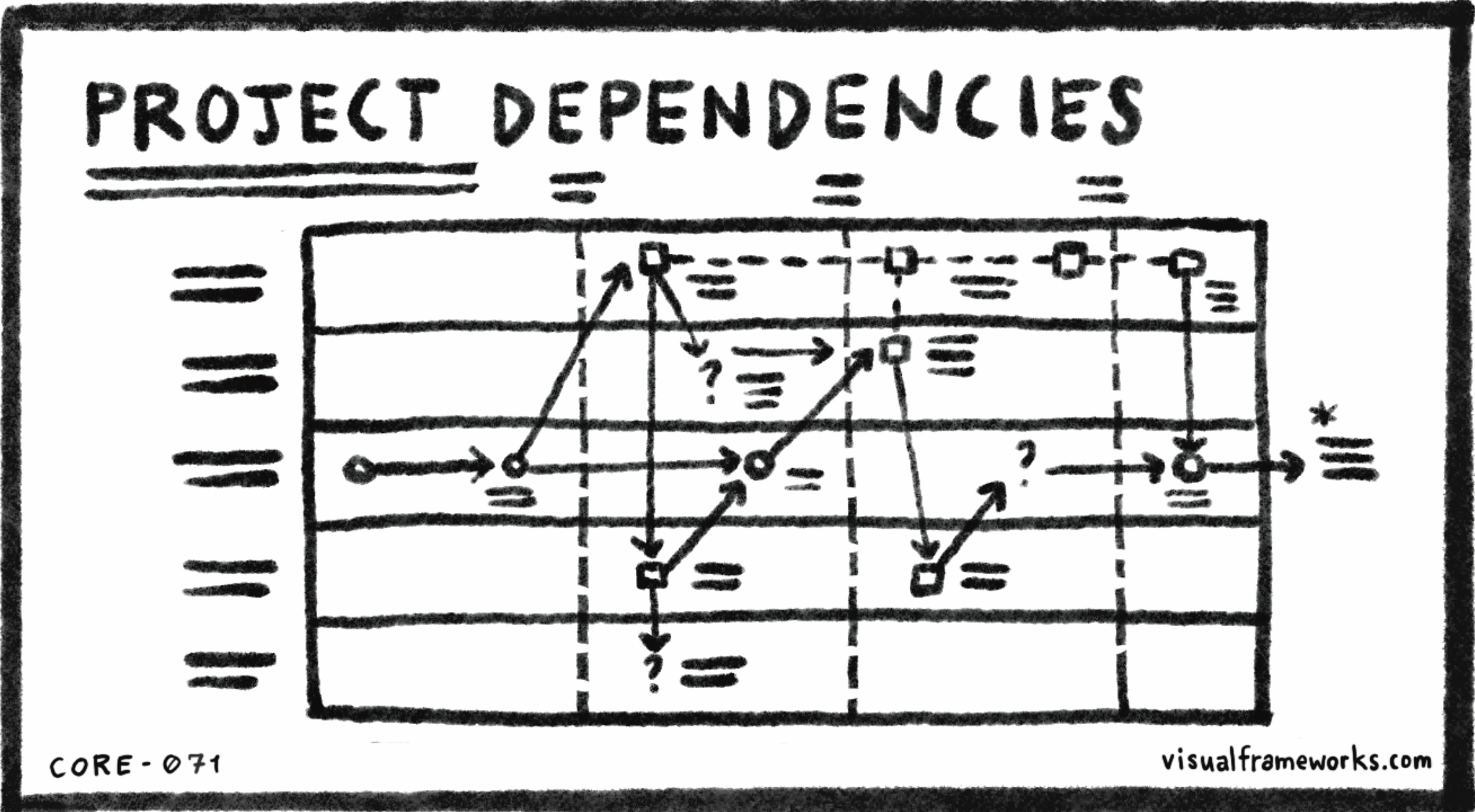Any project involving two or more workstreams creates dependencies — relationships between tasks based on how they are coordinated or sequenced.
For example, you can’t start construction until you have a plot of land to build on, permits, and plans. You can’t bill a customer until you have collected their information. You can’t write a book report until you have read the book, and so on.
The more complex the project, the more dependencies you are likely to have. Dependencies are critical links that you depend on to get the project completed. Handoffs, where important information and materials are transferred from one person or place to another, creates a possibility for things to go wrong.
Good communication is important. If everyone understands what needs to be done and how they fit, they can help you keep everything on track.
Here are some things that can help you gain perspective on a big project:
- Find the dependencies.
- Reduce the number of dependencies, if you can.
- Improve communication. The more people are communicating, the fewer things will fall between the cracks.
On a complex project it can help to visualize the workstreams and dependencies, not just for yourself, but so everyone can be on the same page about who needs to do what, by when.
Can you visualize the work streams and dependencies? Can you organize work streams into swim lanes? Can you identify high-risk points, like handoffs? How can you plan in advance to mitigate these risks?
See also: Milestones, Journey, Flowchart, Path, Routine.
CORE-071
